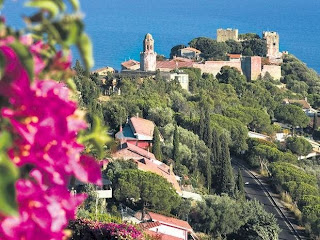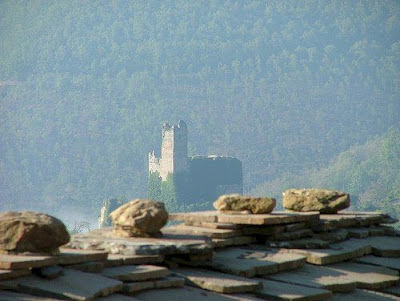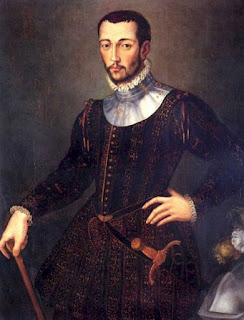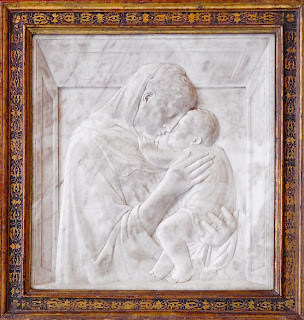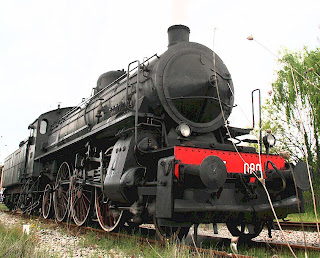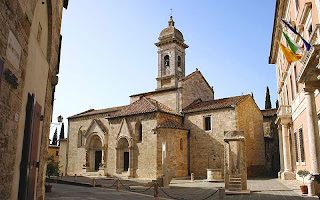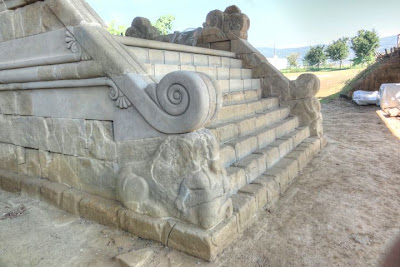This year is the
700th anniversary of the birth of Giovanno Boccaccio, Renaissance writer in both latin and the Italian vernacular, author of the
Decameron and friend of Petrarch. Boccaccio was born either in Florence or in nearby Certaldo and although referring to himself as a Florentine, always signed his name as Boccaccio da Certaldo. Certaldo is well worth a visit if you're in the area and hosts the
Mercantia, one of the best street theatre festivals in Europe.
 |
| Giovanni Boccaccio da Certaldo |
Boccaccio was tutored by Giovanni Mazzuoli and received from him an early introduction to the works of Dante (1265 - 1321). In 1326, Boccaccio moved to Naples with his family - his father was a prominent banker. It was in Naples that he realised his true vocation of poetry, despite spending six years studying canon law. Pieces that he wrote while in Naples include
Filostrato and
Teseida, the sources for Chaucer's
Troilus and Criseyde and
The Knight's Tale, respectively. He might also have played a role in introducing the Sicilian octave to Florence, where it influenced Petrarch.
Boccaccio began work on the
Decameron around 1349 and the work was largely complete by 1352. It was Boccaccio's final effort in literature and one of his last works in Italian. He revised and rewrote the Decameron in 1370–1371 and this manuscript survives to the present day.
During his life, Boccaccio spent considerable amount of time in Venice, Padua, Romagna, Brandenburg, Milan and Avignon, as well as, of course, Florence. Many of these journeys were on Florentine government business and for meetings with Petrarch who became a close friend. Boccaccio died at the age of sixty-two on 21 December 1375, in Certaldo, where he is buried. Following his death, his entire collection of books and manuscripts was donated to the monastery of Santo Spirito, in Florence, where it still resides.
 |
| A setting for Boccaccio's Decarmeron |
By chance, earlier this year, Dr. Guyda Armstrong discovered an uncatalogued manuscript copy of the first version of Laurent de Premierfait's French translation of Boccaccio's
De Casibus Virorum Illustrium, unrecognised and in plain view, at the John Rylands Library of Manchester University. This French humanist and courtier translated the title as
Des cas des nobles hommes et femmes. This manuscript is a very rare copy of the 1400 translation. Laurent de Premierfait carried out a second translation in 1409.
De Casibus Virorum Illustrium ("On the Fates of Famous Men") consists of 56 biographies composed in Latin prose in the form of moral stories of the fates of famous people, similar to his work of 106 biographies "On Famous Women".
De Casibus is a work in the 'exemplary lives' tradition that began with Plutarch's
Parallel Lives, where the tragic biographies of the past are used as a political guide and warning for current rulers. The book is notable for its critique of tyranny and for 400 years was much more widely read that Boccaccio's vernacular works upon which his fame now rests.
Chaucer's
The Monk's Tale might have drawn inspiration from
De Casibus since Chaucer's incipit reads: "Heer bigynneth the Monkes Tale De Casibus Virorum Illustrium" and many of the characters are the same, but Chaucer credits only Petrarch as a source. Neither of them would have thanked Chaucer for the credit since, unlike much of Chaucer's work,
The Monk's Tale is indescribably dreary and boring, in sharp contrast to Boccaccio's compelling stories and forceful latin.
 |
One of the few presentable scenes from Pasolini's 1971 film adaptation of nine
stories from Boccaccio's Decameron. |
Click here to download the programme of the events taking place in Florence and Certaldo to celebrate Boccaccio's seventh centenary anniversary year.
More about the Boccaccio Museum in Certaldo.
|
Borgo di
Vagli restored mediaeval hamlet in Tuscany
|
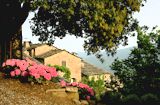 |
Borgo di Vagli has been authentically restored as
a Tuscan vacation hamlet. The residences can be bought in the form of
fractional ownerships, making a holiday home in Tuscany possible at
modest cost.
|
|
|
|
Fulvio Di Rosa
All content copyright © Fulvio Di Rosa 2013. All rights reserved.














